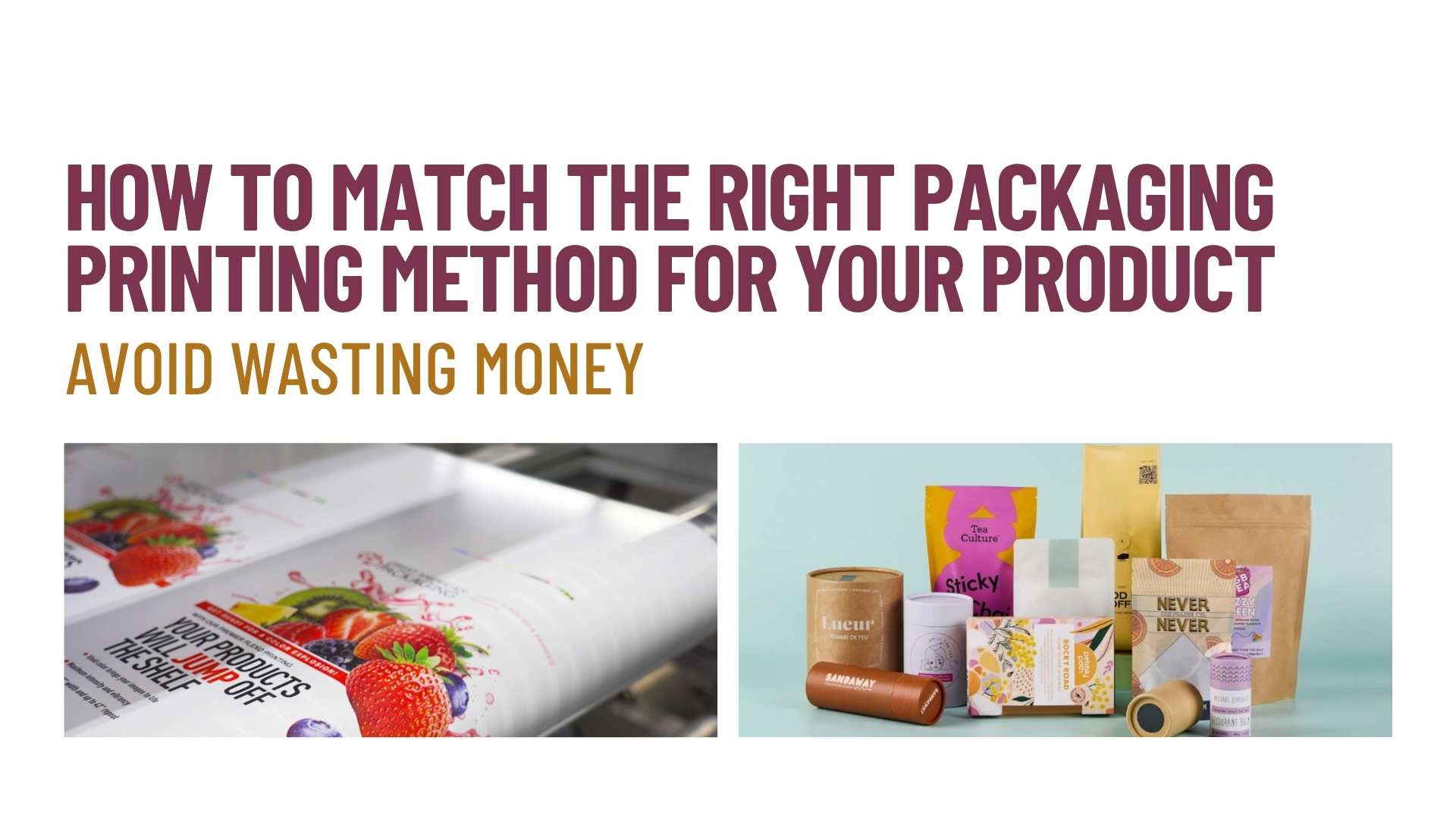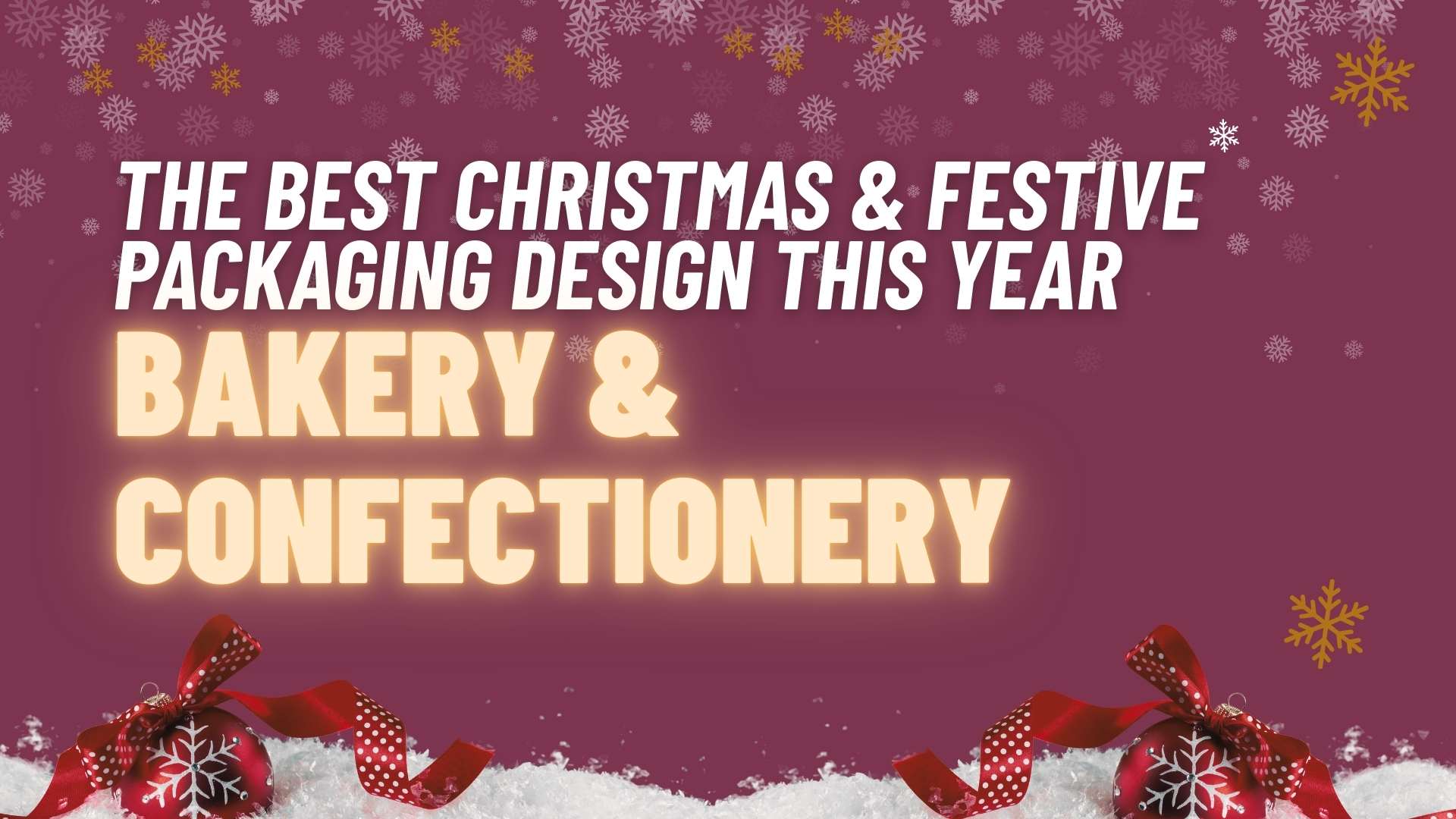Ever wonder why some packaging looks sharp, vibrant, and professional, while others fall flat? It often comes down to the packaging printing technique behind it. The method you choose doesn’t just affect appearance; it impacts cost, production speed, material compatibility, and overall brand perception.
Even if you’re launching a new product or refining your current packaging, knowing the best printing techniques can give you a serious edge. Let’s see the key options every brand should know to make smarter, more effective packaging printing decisions.
Common Packaging Printing Techniques
Packaging printing can make a big difference, let’s look at the most widely used techniques, including what they’re best for, the pros and cons, and which situations they suit best.
1. Flexographic (Flexo) Printing
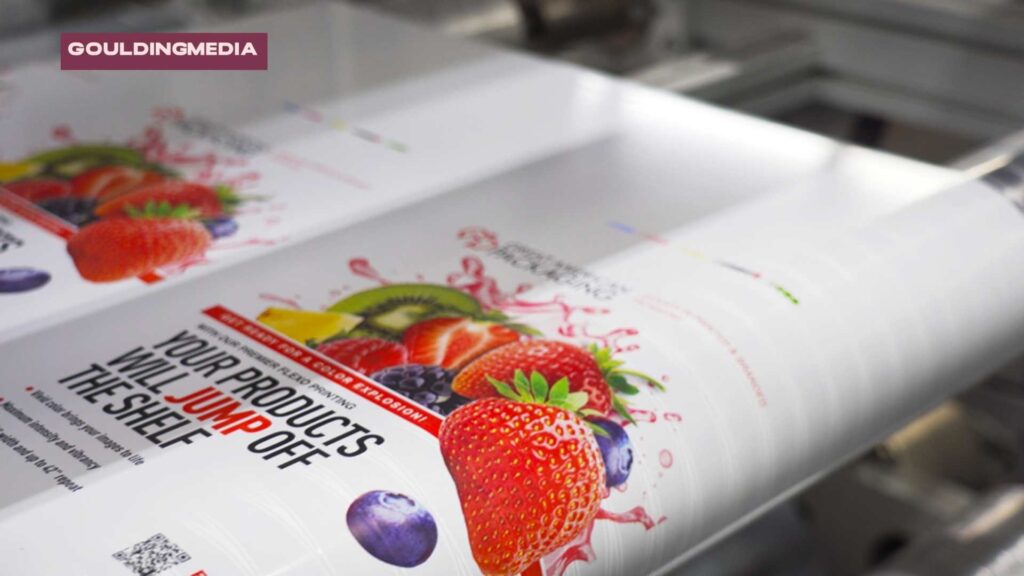
Image Credit: Great American Packaging
Flexo uses flexible rubber plates mounted on rollers that transfer ink onto materials as they roll through the press. It’s designed for high-speed, high-volume production.
Best for:
High-volume runs for flexible packaging such as plastic films, bags, labels and also for some types of corrugated boxes.
Pros:
- Cost-effective for large orders
- Works on many materials: plastic, paper, films, labels, corrugated board
- Fast production speeds
- Suitable for food packaging
- Suitable for water-based inks for a more sustainable option
- Consistent results on large print runs
- Opportunities to reduce product range costs, with smart design setup
- Film material is one of the most robust and cost-effective packaging types
Cons:
- Plates can be expensive to make for each colour
- Plate costs can vary dependant on cylinder size
- Usually 6-12 weeks lead time. It can be busier in the lead up to seasonal periods
- Limitations on small complex designs
- New designs and minor design changes require new plates
- Fine detail can be lost on some materials
- Minimum order quantities (MOQ) are often above the volume startups need
- MOQ can lead to over-ordering, and in the long term, additional waste
2. Lithographic (Offset) Printing
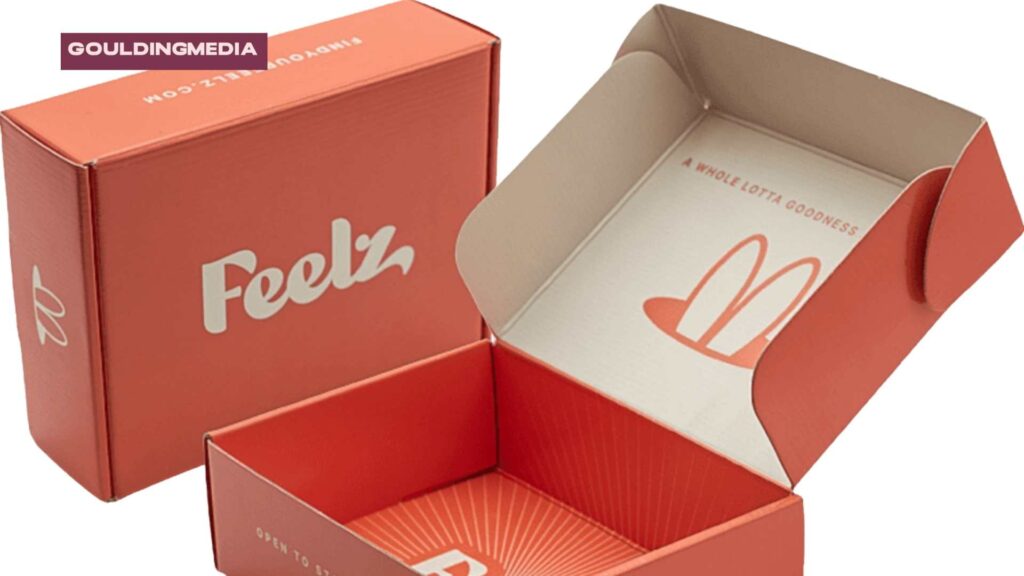
Image Credit: CTP Boxes
Offset printing uses metal plates to transfer ink to a rubber blanket, which then transfers the ink to the packaging. This allows for sharp, detailed prints.
Best for:
High-end boxes, cartons, and packaging that require detailed graphics, fine text, or photographic images.
Pros:
- Excellent print quality and colour reproduction
- Good for detailed, complex designs
- Cost-effective for medium to large volumes
- Many special finishing options like gloss, matt, and spot varnishes
- Widely available across the UK
Cons:
- High setup costs make it uneconomical for small runs
- Longer setup times
- Limited to flat, paper-based materials
- Detailed print quality can be an issue if printers have older equipment
3. Gravure Printing
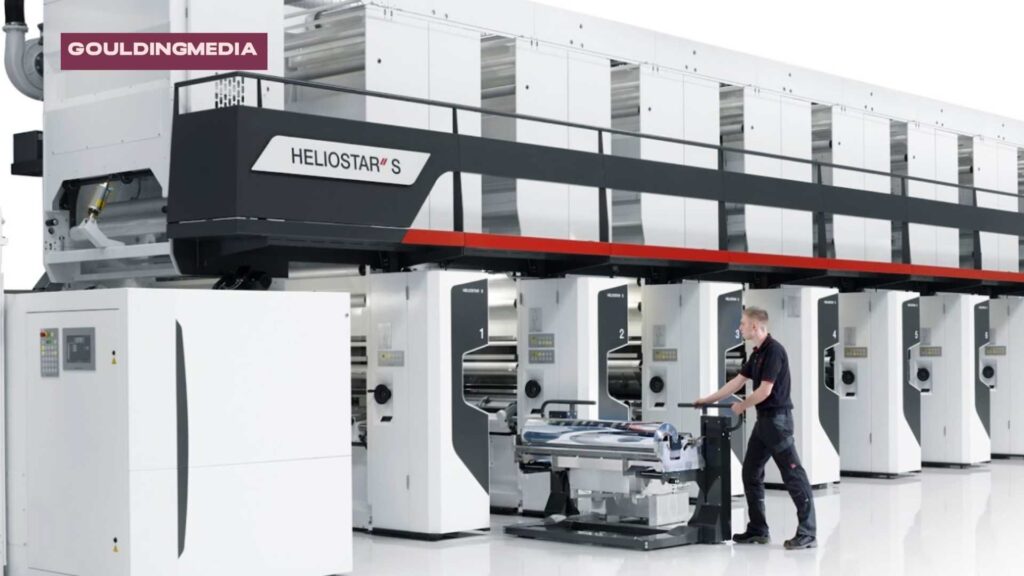
Gravure uses engraved metal cylinders with tiny recessed cells that hold ink. The packaging material is pressed against these cylinders, transferring the ink from the cells to the surface. In basic terms the process is very different to flexographic but the packaging materials you can print on are similar.
Best for:
Large volumes of flexible packaging, like pouches, films, and bags, which require a high-quality finish.
Pros:
- Extremely high and consistent print quality
- Excellent for detailed images and continuous tone graphics
- Bright and vibrant colour reproduction
- Strong white reproduction essential for transparent film packaging
- Durable cylinders that last for millions of impressions
- Fast production speeds
- Strong and consistent tactile and special varnishes
Cons:
- Expensive cylinder setup costs
- Only cost-effective for very large orders
- Limited flexibility for design changes
- Smaller number of printers available within the UK
4. Digital Printing
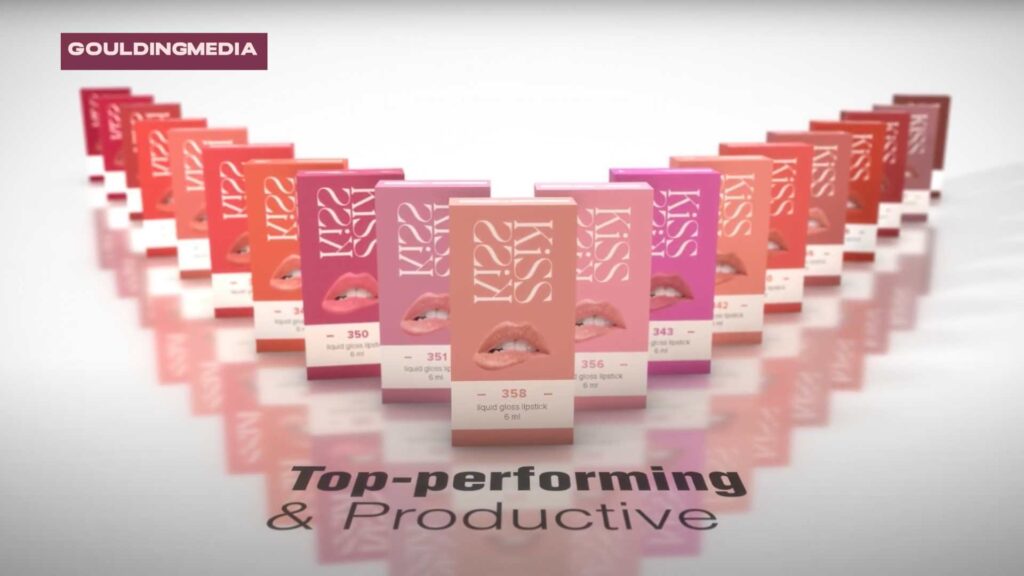
Digital printing shares similarities to a home or office printer, but is specifically designed for use with packaging materials. Your design goes directly from the computer to the printer. No special plates or lengthy setup are needed.
Best for:
Short runs, fast turnaround, full-colour designs, frequent design updates and promotional sample packaging.
Pros:
- No setup costs, ideal for the smallest quantities
- Fast production times
- Shorter lead times
- Easy to change or update designs
- Prints full-colour images and gradients
- Great for prototypes and personalised packaging
- Can also accommodate Pantone inks and special varnishes
Cons:
- Colour matching may vary slightly between runs
- Not as sharp on rough or absorbent materials
- Less economical as quantity increases
- Limited options for special finishes like metallics or embossing
Digital Packaging Printing vs Traditional Print Methods
There are two main ways to print packaging: digital printing and traditional printing. Both are useful — it just depends on what you need!
What is Digital Printing?
Digital printing is a newer way to print. It doesn’t need printing plates or lots of setup time. That makes it great for:
- Small batches
- Quick printing
- Designs that change often
- Personalised packaging (like with names or special messages)
- Test samples or promo items for marketing
One big advantage: if you need more printed later, you can do it quickly — without paying extra for setup.
What is Traditional Printing?
Traditional printing includes flexographic, offset, and gravure printing. These methods need more setup at the start — they use printing plates or cylinders that take time to make.
But they’re perfect for printing millions of packages, because:
- They become much cheaper per unit when printing a lot
- They give very high-quality and consistent results, even with tiny details or special finishes.
Which One Should You Use?
- Use digital printing for small or fast jobs, testing new ideas, or special packaging for events.
- Use traditional printing for big orders — it’s better when you need lots of packages and want the best quality at the lowest cost per pack.
Matching Printing Methods to Packaging Types
When printing packaging, the kind of material you use is very important. Different materials work best with different ways of printing. Knowing which one to choose helps you get good quality and save money.
How to print packaging labels:
Labels (the stickers or tags on packages) are usually printed in two ways:
- Digital printing is great for small amounts, colourful designs, and when you need to change the design often or make it personal.
- Flexographic (flexo) printing is better when you need to print a lot of labels at once and want to keep the cost per label low.
How to print packaging boxes:
Boxes like folding cartons and mailer boxes are often printed using:
- Offset printing, which gives sharp pictures, bright colours, and special finishes like shiny or matte looks. It’s perfect for products you see in stores.
- Digital printing is good for printing a few boxes quickly, trying out new designs, or making changes often. It still looks nice and is fast.
- Flexographic printing is now also being used more for boxes made from corrugated cardboard (like shelf display boxes). It can print detailed designs using regular colours (CMYK) and sometimes extra special colours (Pantone), depending on the printer’s machine.
How to print flexible packaging:
Flexible packaging (like pouches, bags, wraps, and shrink film) is usually printed using:
- Flexographic printing, which is fast and great for printing lots of simple to medium-detailed designs.
- Gravure printing is used for really high-quality pictures and colourful designs, especially for big amounts. Big brands like Cadbury and Nestlé use gravure printing for much of their packaging.
Material compatibility and limitations summary:
- Digital printing works best on smooth, coated papers and folding cartons, but may struggle with textured and uncoated surfaces.
- Flexo printing handles a wide range of materials, including films, plastics, paper, and corrugated board.
- Offset litho printing is mainly suited to paper-based materials and thin cartons, but not flexible films.
- Gravure printing excels on flexible films and foils but is generally too costly for short runs.
Key Considerations Before Choosing a Packaging Printing Technique
With the key techniques and use cases in mind, it’s time to think about practical constraints. The following factors can significantly influence which printing method makes the most sense for your project:
- Material Compatibility: Each printing method works best with certain materials. If you use the wrong match, the print might not look good or it could cause problems during printing.
- Minimum Order Quantities (MOQs): Some printing methods need you to order a lot of items at once because of setup costs. Others let you print smaller amounts.
- Lead Times and Turnaround: Some printing methods take longer to get ready and finish, especially when it’s busy. This can affect when your product is ready to sell or restock.
- Colour Accuracy and Detail: Not all printing methods can show tiny details or perfect colours. If your design has lots of small parts or special colours, you’ll need the right method and good equipment.
- Cost and Budget: Printing costs can change depending on how you print, how many you need, and how it’s set up. It’s important to find a good balance between looking great and staying within your budget.
Where Should You Get Your Packaging Printed?
Where your packaging is printed matters too. If you need to check the colours and quality in person before the full print, it’s easier if the printer is close by. That way, you can catch any mistakes early and save money.
Some printers don’t have the right machines or experience for special materials or finishes. That’s why it helps to work with someone who knows the printing world and can connect you with the right printer for your project.
We work with expert printers across the UK and Europe. We can manage the whole printing process for you, making sure everything is high quality, done right, and without common mistakes.
Why Work with a Packaging Expert (Not Just a Printer or Freelancer)
The print process doesn’t start at the press; it starts with expert planning. Working with someone who understands the full production chain, from design to delivery, can help you avoid common and costly errors.
Real-World Mistakes Can Be Costly
We’ve seen firsthand how small oversights can lead to expensive problems. Issues like artwork set up incorrectly for the print method, using the wrong colour profiles (RGB instead of CMYK), missing bleeds, or failing to outline fonts can cause delays or unexpected results if the colours are incorrect or dull.
Printing plates are a fixed cost, and once printing plates are made or production starts, these errors become costly to fix, both in time and money. A delayed print run, a delayed launch… all can be detrimental to your production and can cause friction with buyers.
Why Designers, Freelancers, and Print-Only Vendors May Miss Key Issues
Printers tend to focus only on running their machines and may not flag problems with your artwork until it’s too late, or even worse, once you have received the full print order.
Freelancers or general designers may create great-looking artwork, but often lack the technical print knowledge needed to prepare files correctly for the complexities of different print processes.
They may not fully understand how packaging materials, print methods, and artwork setup interact, especially across multiple suppliers or print formats.
Complete Guidance from Design to Delivery
As packaging experts, we manage the entire process and address your specific requirements from start to finish. We make sure artwork files are fully prepared and compatible with the selected print method, help you select the right print suppliers based on your materials, quantities, and complexity, and can even oversee production — including attending press passes when needed.
With full oversight and deep print knowledge, we ensure your packaging is produced to the best standard first time, and where possible, saving you money. You’ll feel less worried and more confident throughout the process.
Colour Reproduction in Packaging Printing
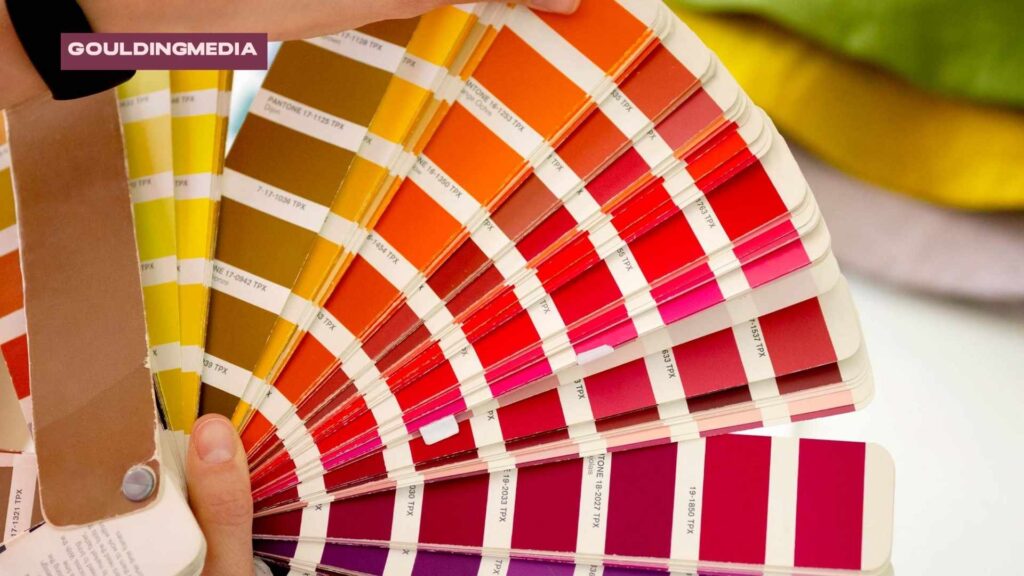
Many brands want consistency across boxes, labels, and pouches, but different materials and methods can deliver variations in colour. Let’s explore why this happens and how expert colour management can protect your brand’s visual identity.
How Different Materials and Print Methods Affect Final Colours
Even if you use the same design and colour code, the final colour might not look the same on every package. That’s because:
- Different printing methods (like digital, flexo, offset, or gravure) use ink in different ways.
- Different materials (like cardboard, plastic film, or foil) absorb ink differently.
So, a bright red on a shiny box might look dull on a flexible plastic pouch — even with the exact same colour setting!
What Happens If the Colours Don’t Match?
If your brand uses the same design on a box and a pouch, but the colours don’t match, it can look messy. Shoppers might think something is wrong or that the packaging is low quality.
This often happens when each printer only focuses on their own part, instead of thinking about how everything works together. That’s why matching colours across all parts is so important.
Why You Need Expert Colour Management
This is where a packaging expert helps a lot. We make sure all parts of your packaging — even from different printers and materials — look the same.
We work with the printers, use colour checks, and test prints to make sure the colours match closely. Without this kind of careful planning, mistakes can happen and be hard to fix later.
Why Pantone Colours Help
Pantone is a special system for picking and matching colours. It gives everyone — designers, printers, and suppliers — the same reference, so the colours look the way they should.
Pantone helps keep your packaging colours looking the same, even if different printers are working on different parts.
But it’s not always simple — you have to choose the right time, place, and way to use Pantone. It can cost more or not work with certain materials. That’s why we help pick the best colour setup for each printing method.
Want to learn how to use Pantone effectively in your packaging? Don’t miss our article on Pantone in Packaging Design for real-world tips on how to get colour right every time.
How to Reduce Your Packaging Printing Costs
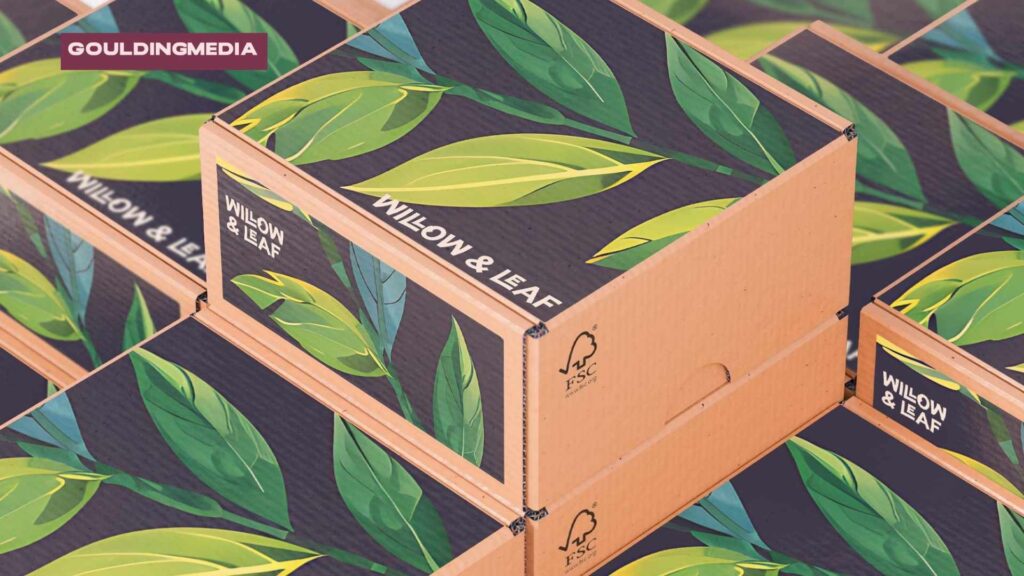
Reducing packaging costs isn’t just about finding the cheapest printer — real savings often come from smart design decisions made early in the process. By working closely with a packaging expert, you can uncover multiple ways to lower costs without sacrificing quality. Some of the key areas where cost savings can be achieved include:
- Optimising material usage: Custom packaging sized specifically to your product uses less material than generic stock sizes, reducing waste and raw material costs.
- Choosing efficient box styles: Standard designs, such as those listed in the FEFCO catalogue, have been developed for maximum material efficiency and can often lower production costs.
- Reducing shipping costs: Right-sized packaging and smart stacking means you’re not paying to ship empty space, allowing you to fit more units per pallet or shipment, and ultimately lowering freight costs.
- Minimising void fill: Well-designed packaging can hold products securely in place, reducing or eliminating the need for extra fillers that add cost, slow down packing, and create more waste.
- Preventing transit damage: Improved structural design can better protect your products during shipping, reducing returns, replacements, and customer complaints.
- Improving assembly efficiency: Easy-to-assemble designs and better material choices can speed up packing times, lower labour costs, and increase overall operational efficiency.
- Rationalising inventory: Consolidating packaging sizes allows you to place larger orders for fewer box types, benefiting from economies of scale, easier inventory management, and reduced ordering complexity.
Reprographics: The Secret to Flawless Print Quality
One of the most important (but often forgotten) parts of printing is something called reprographics. This step happens after the design is finished but before the printing begins. It’s where we get your design files ready for the printer.
What is Reprographics?
Reprographics means checking and setting up your artwork so it prints the right way on the right material. It’s not about fixing spelling or grammar — it’s about checking tiny technical details that could mess up the printing if not handled early.
If this step is skipped or done wrong, even the best design can come out badly on your packaging.
Why Printers Need Help with File Setup
Most printers have their own special teams or outside experts who handle this step, especially for Flexo and Gravure printing. But they don’t always know what the designer wanted — they can’t read minds!
That’s why we help by making sure the files are prepared in a way printers understand. We also add helpful notes or instructions so they know exactly what to do, giving you the best print results.
Why Checking Files Early Saves Money
If the printer finds a problem after printing starts, it can be very expensive to fix. By then, they might have already made printing plates or started using materials — and redoing everything could cost a lot or delay your project.
Sometimes they’ll just try to make it work, but the print might not look great. It’s much better to catch and fix problems before anything is printed.
Real-Life Lessons from Print Jobs
Before starting Goulding Media, I worked as a print consultant. I saw many print problems happen just because the files weren’t set up right. Some could be fixed — others were too late, and clients had to accept low-quality prints and try again later (which also meant paying again).
Designs can look perfect on a computer screen, but printing them in large amounts is more complicated. Every design needs careful planning to make sure the colours and setup work well with the printing method.
Fix Bad Files Early — Not at the Press
Once printing starts, it’s too late to fix big problems. Printers will try their best, but they’re busy and don’t want to stop and restart the whole job. That’s why reprographics — done by people who know what they’re doing — is one of the most important parts of getting your packaging printed right.
Understanding Food Packaging Printing Regulations
After choosing a printing technique and aligning it with your packaging goals, it’s important to consider industry-specific rules, especially for food brands. Printing food packaging involves strict compliance with safety and legal standards that go beyond general packaging requirements.
Specific Materials for Food-Safe Packaging
When producing packaging for food products, the choice of materials is heavily regulated. Only certain materials are approved for direct food contact, and they must meet strict safety standards to prevent contamination or migration of substances into the food.
This includes selecting inks, coatings, adhesives, and films that are certified safe for food packaging. The type of food being packaged — whether dry, oily, frozen, or fresh — also affects which materials are suitable.
Shelf Life, Plastic Taxes, and Barrier Layers
Food packaging often requires specialised barrier layers to protect products from moisture, oxygen, light, or other environmental factors that can affect shelf life and quality. Materials must be carefully chosen to create the right balance between performance and cost.
In addition, regulations such as the UK Plastic Packaging Tax and EU sustainability directives place added restrictions on the types of plastics and recyclable materials that can be used, which makes proper material selection even more critical.
Why It’s Crucial to Work with Knowledgeable Printers
Food packaging is one area where working with experienced printers is absolutely essential. Not every printer has the equipment, certifications, or expertise to handle food-safe packaging correctly. Mistakes can lead to legal issues, product recalls, or harm to your brand reputation. This is why we work closely with a network of trusted UK and European printers who specialise in food-safe packaging.
We offer a fully managed service, handling printer selection and managing print orders, maintaining the highest quality for your packaging requirements.
For a more detailed guide on food packaging regulations, see our full article: UK Packaging Regulations in 2025: Essential Compliance Guide for Brands.
Additional Services from Packaging Printers
Once the printing and materials are handled, logistics and inventory become the next challenge. Fortunately, many printers now offer value-added services that help streamline your supply chain and reduce costs.
Warehousing, Order Splitting, and Print-on-Demand Options
One valuable option is warehousing, where your printer stores pre-printed packaging stock on your behalf and releases it in smaller batches as you need it.
This allows you to order in larger quantities to secure better pricing while only taking delivery of what you need at any given time.
Some printers can also split orders into multiple delivery dates or product SKUs, which is especially helpful for businesses that have multiple product lines or seasonal demand peaks.
Bulk Material Purchasing to Secure Better Pricing
Printers can also purchase raw materials in bulk — such as board, film, or inks — and hold them in stock for your future orders. If you regularly print the same packaging across multiple product lines or run the same packaging design several times a year, locking in bulk pricing on materials can significantly lower your long-term costs.
For brands managing multiple SKUs or seasonal promotions, this approach allows you to benefit from economies of scale while maintaining flexibility in production scheduling.
Supporting Seasonal or Multi-SKU Brands
If your business manages a variety of product lines, packaging types, or seasonal promotions, these services can help you plan ahead while keeping your inventory and cash flow more efficient.
By coordinating larger production runs, securing material pricing in advance, and splitting deliveries, printers can help smooth out the production process, reducing lead times, minimising shortages, and avoiding costly rush jobs during busy periods.
The Role of Sustainability in Print Choices
Sustainability is becoming a key factor in packaging printing decisions. Choosing eco-friendly inks, recyclable or compostable materials, and print processes that minimise waste can all help reduce your environmental footprint.
Certain printing methods, like digital printing, create less setup waste for small runs, while water-based inks used in flexographic printing can offer a safer, lower-impact option for food packaging. Material selection also plays a critical role, especially as regulations around plastics and recyclability continue to evolve.
For a deeper look at sustainable packaging options, see our full Sustainable Packaging: The Future of Responsible Business Practices article.
Wrapping Up
The right packaging printing method can elevate your brand. But even the best design and print process can go wrong without expert oversight. From artwork setup to colour management, material selection to supplier coordination, every detail matters — and the cost of mistakes can be high.
At Goulding Media, we manage the entire process from design to delivery, ensuring your packaging is printed to the highest standard with no costly surprises. Trust our expert team to match you with the right materials, techniques, and suppliers. Get in touch today to create packaging that performs as well as it looks.

